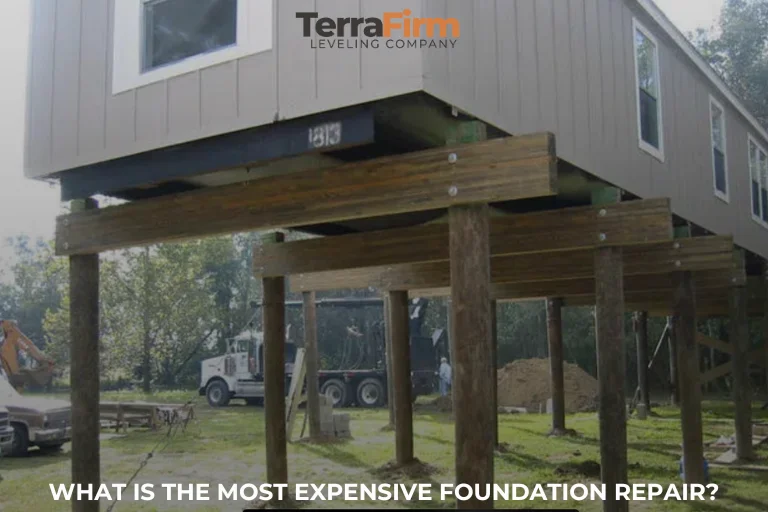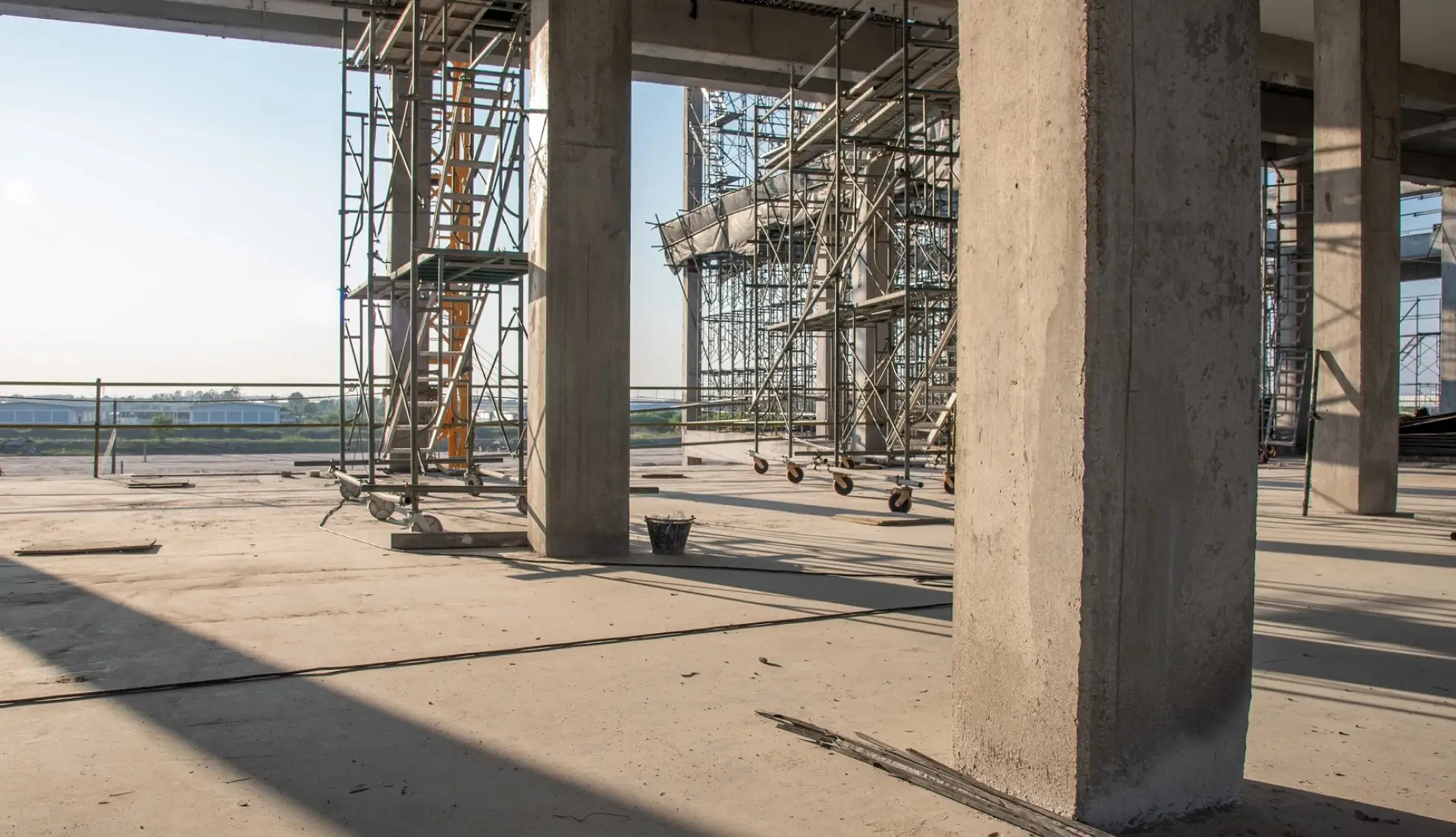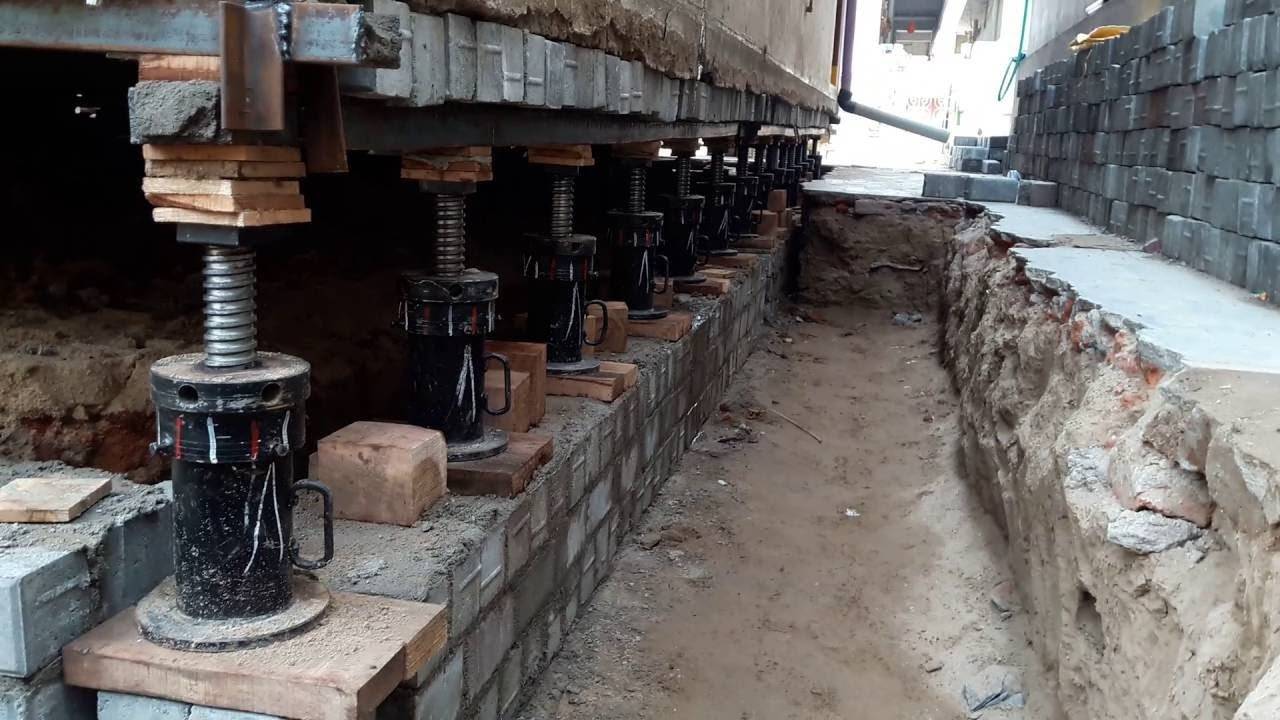Foundation problems can be one of the most daunting issues homeowners face, both in terms of the damage they cause and the cost to repair them. While many foundation issues can be addressed with relatively affordable solutions, some repairs come with a hefty price tag.
The most expensive foundation repair typically involves replacing the entire foundation, which is a major project requiring specialized equipment, extensive labor, and significant time.
In this article, we’ll explore why foundation replacement is often the most expensive option, what other costly foundation repairs might entail, and why early intervention is crucial to avoid high repair costs.
Key Takeaways
- Full foundation replacement is typically the most expensive foundation repair, with costs ranging from $30,000 to over $100,000.
- Other costly foundation repairs include extensive pier installation, waterproofing for homes with water damage, and structural reinforcements.
- Early detection and repair of foundation issues can help prevent the need for these expensive solutions.
Why Full Foundation Replacement Is the Most Expensive Repair

When foundation damage is so severe that the structure’s stability is compromised, full foundation replacement is often the only solution. This process involves lifting the house off the existing foundation, removing the damaged foundation, and building a new one in its place. Due to the complexity and scale of the work, foundation replacement is the most expensive form of foundation repair.
Factors That Make Foundation Replacement Expensive
- Lifting the House Before a foundation can be replaced, the house must be lifted off the ground using hydraulic jacks and cribbing. This is a highly technical process that requires experienced professionals, specialized equipment, and precise coordination.
- Hydraulic Jacks: A system of hydraulic jacks is used to lift the house evenly, ensuring no part of the structure is damaged during the lift.
- Cribbing: Wooden or steel cribbing is placed beneath the house to stabilize it in the air while the old foundation is removed and the new one is constructed.
- Removing the Old Foundation After the house is lifted, the old foundation must be completely removed. This can involve breaking up concrete, excavating soil, and hauling away debris, all of which require heavy machinery and skilled labor.
- Excavation: The area around the foundation must be excavated to provide access for workers and equipment. This process can be time-consuming and labor-intensive, especially if the foundation is large or difficult to access.
- Building the New Foundation Constructing a new foundation requires laying footings, pouring concrete, and reinforcing the structure with steel or other materials. The type of foundation being installed—whether it’s a slab, pier and beam, or crawl space foundation—will also impact the cost.
- Footing Installation: Concrete footings provide the base for the foundation walls and must be installed precisely to ensure stability.
- Pouring Foundation Walls: Concrete is poured to form the foundation walls, and reinforcement materials like rebar may be added to strengthen the structure.
- Lowering the House Once the new foundation has been built and allowed to cure, the house must be carefully lowered back into place. This process requires the same precision as the initial lift to ensure the house is aligned correctly with the new foundation.
- Alignment: The house must be aligned perfectly with the new foundation, ensuring that all load-bearing points are properly supported.
Estimated Costs for Foundation Replacement
The cost of foundation replacement varies depending on the size of the home, the type of foundation being replaced, and the complexity of the project. On average, full foundation replacement can cost anywhere from $30,000 to over $100,000.
- Small Homes: For smaller homes, foundation replacement may cost between $30,000 and $50,000.
- Larger Homes: For larger homes or homes with complex foundations, the cost can exceed $100,000.
Other Expensive Foundation Repairs
While full foundation replacement is generally the most expensive repair, there are other costly foundation repair methods that homeowners may encounter.
These repairs are typically needed when the foundation damage is extensive or when the home is located in areas with challenging soil or environmental conditions, such as the Texas Gulf Coast.
1. Extensive Pier Installation
Pier installation is one of the most common methods for stabilizing a sinking foundation, but when many piers are needed or when the home’s foundation has settled unevenly, the cost can become quite high.
Types of Piers:
- Helical Piers: Helical piers are screwed into the ground to reach stable soil, then used to lift and support the foundation.
- Push Piers: These piers are hydraulically driven into the ground and anchored into bedrock or stable soil. They are used to lift the foundation and prevent further settlement.
Cost of Pier Installation:
The cost of installing piers can vary significantly depending on how many piers are needed and the type of piers being used. On average, pier installation can cost between $1,000 and $3,000 per pier, with total project costs reaching upwards of $20,000 to $50,000 for large or severely damaged foundations.
2. Waterproofing and Drainage Solutions
Foundation problems caused by water damage or poor drainage can be difficult and expensive to fix. Water can weaken the soil around the foundation, causing it to shift or settle. Addressing these issues often involves extensive waterproofing, installing drainage systems, or repairing water-damaged foundation materials.
Common Waterproofing Methods:
- Exterior Waterproofing: This involves excavating around the foundation and applying a waterproof membrane to the exterior walls to prevent water from seeping into the foundation.
- French Drains: French drains are installed around the foundation to redirect water away from the structure and prevent water from accumulating near the foundation.
- Sump Pumps: In homes with basements or crawl spaces, sump pumps may be installed to remove water that accumulates around the foundation.
Cost of Waterproofing:
Waterproofing can be a costly process, especially if extensive excavation or drainage solutions are required. On average, waterproofing can cost between $5,000 and $15,000, with more complex solutions reaching up to $20,000 or more.
3. Structural Reinforcements
In cases where the foundation has suffered structural damage, such as large cracks or bowing walls, structural reinforcements may be needed to stabilize the foundation and prevent further deterioration. These repairs often involve adding steel beams, carbon fiber straps, or other reinforcements to strengthen the foundation.
Common Reinforcement Methods:
- Steel Beams: Steel beams are installed to support sagging or bowing foundation walls.
- Carbon Fiber Straps: These straps are applied to cracked or bowing walls to provide additional support and prevent further movement.
- Wall Anchors: Wall anchors are installed to stabilize foundation walls that are bowing due to pressure from the surrounding soil.
Cost of Structural Reinforcements:
The cost of structural reinforcements depends on the extent of the damage and the method used. On average, reinforcing a foundation can cost between $5,000 and $25,000, with more extensive repairs costing upwards of $50,000.
Why Early Intervention Can Save You Money

Foundation repairs are one of the most expensive home repairs a homeowner can face, but the good news is that early intervention can often prevent the need for costly repairs like full foundation replacement. By addressing foundation problems as soon as they are detected, you can often fix the issue with less invasive (and less expensive) methods.
Benefits of Early Foundation Repair:
- Lower Costs: Addressing foundation issues early can save you thousands of dollars in repair costs. For example, fixing a small crack in the foundation may cost a few hundred dollars, while waiting until the damage worsens could result in a much higher repair bill.
- Prevent Further Damage: Early repairs can prevent the foundation damage from spreading to other parts of the home, such as the walls, floors, or roof.
- Protect Property Value: Homes with foundation problems often lose value, but by addressing the issue early, you can protect your investment and maintain the home’s resale value.
Conclusion
When it comes to foundation repair, full foundation replacement is generally the most expensive option, often costing between $30,000 and $100,000 or more. Other costly repairs, such as extensive pier installation, waterproofing, and structural reinforcements, can also add up quickly, depending on the severity of the damage.
While foundation repairs can be costly, addressing foundation issues early can help prevent the need for these more expensive solutions. If you suspect your foundation is compromised, it’s important to consult with foundation repair experts like TerraFirm Leveling to assess the situation and recommend the most effective and cost-efficient solution.
FAQs
1. What is the cheapest foundation repair method?
The cheapest foundation repair methods are typically minor crack repairs or slab jacking (also known as mudjacking), which can cost between $500 and $2,500, depending on the severity of the issue.
2. How long does a foundation replacement take?
Replacing a foundation typically takes several weeks, depending on the size of the house and the complexity of the project. The process includes lifting the house, removing the old foundation, building the new one, and allowing it to cure.
3. How can I avoid expensive foundation repairs?
Regular foundation inspections and early detection of issues can help prevent expensive foundation repairs. Maintaining proper drainage around the home and addressing minor cracks or settlement early can prevent more severe damage.
4. Will my homeowner’s insurance cover foundation repairs?
Most homeowner’s insurance policies do not cover foundation repairs unless the damage is caused by a specific event, such as a flood or earthquake, that is covered by the policy. It’s important to check your policy for details.
5. Can all foundation issues be repaired without replacement?
Many foundation issues can be repaired without full replacement, especially if they are detected early. Methods like pier installation, slab jacking, and structural reinforcements can stabilize the foundation without the need for complete replacement.





